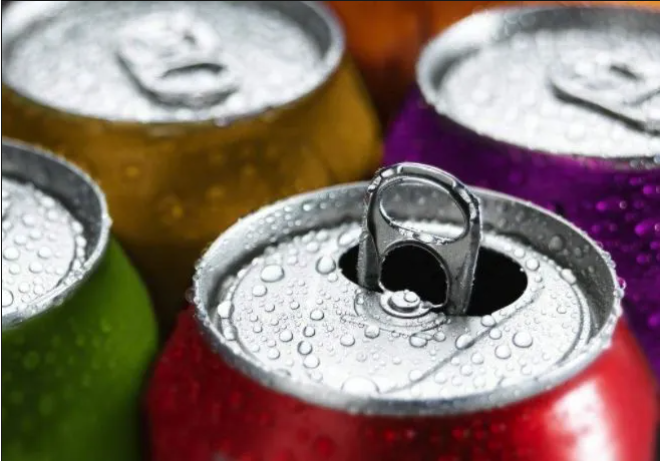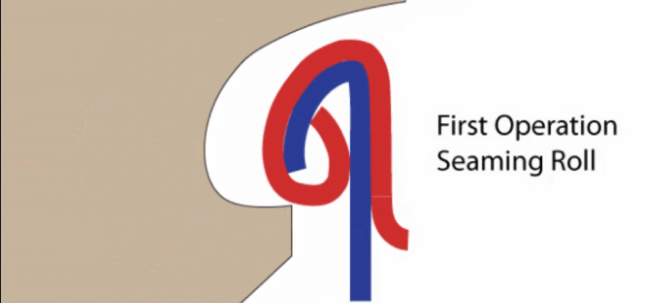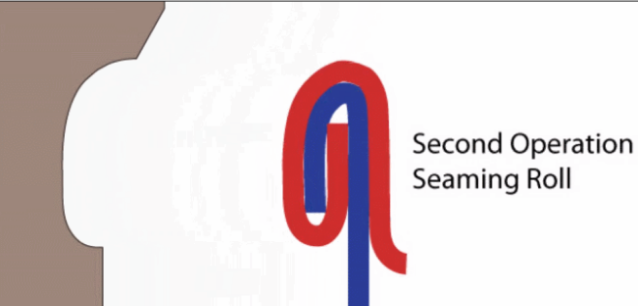Aluminum cans are a very common type of packaging container in our daily lives and are widely used for packaging various beverages and foods.
At the moment of opening each can of beverage, consumers often only focus on the convenience of the pull ring, but few people notice the slightly raised metal protrusion around the edge of the can opening. This seemingly insignificant structure is actually a masterpiece of modern industrial design. It is not only the “safety lock” for sealing the beverage but also the crystallization of materials science, mechanical principles, and precision manufacturing.
I. The Sealing Revolution from Iron Cans to Aluminum Cans In the early 19th century, the invention of metal cans completely revolutionized the way food was preserved. However, the early cans required the use of tools to open them, resulting in a very poor user experience. It was not until 1959, when the American engineer Ermal Cleon Fraze invented the design of the pull-tab can that metal containers truly became popular among the general public. Nevertheless, the early pull-tab cans still faced two major problems: insufficient sealing, which led to the deterioration of beverages, and insufficient strength of the can body, which caused damage during transportation.
The breakthrough of the Double Seam Technology became a turning point.
As shown in the following diagram, the red part represents the aluminum sheet of the can lid, and the blue part represents the aluminum sheet of the can body. The curled edges of the can lid and the can body will closely fit together under the action of mechanical pressure, and this process will form the first layer of the curled edge.
Then, by applying pressure again, the second layer of the curled edge is formed, and this layer of the curled edge is located inside the first layer of the curled edge. In this way, two layers of seals are formed between the can lid and the can body, and their shape is just like that of a spring roll.
This process precisely curls the metal edges of the can body and the can lid into two layers to form a mechanical interlocking structure. At the same time, liquid sealant is filled, and finally, a raised ring is formed at the can opening. Data shows that the leakage rate of modern pull-tab cans has been reduced to less than one in a million, and the raised part at the can opening is exactly the core carrier of this achievement.
II. Structural Analysis
1. Material Selection: The Ultimate Application of Aluminum Material Modern aluminum can bodies mostly use 3004 aluminum alloy, which has a thickness of only 0.1 millimeters (equivalent to the diameter of a human hair), yet it can withstand an internal pressure of more than 6 atmospheres. Due to the ductility of the aluminum material, when it is stamped and formed, the edge of the can opening can form an inward arc through the “necking process”, and the raised structure is strengthened as a mechanical fulcrum during this process.
2. Geometric Design: The Industrial Practice of Bionics The cross-section of the raised part of the can opening presents a unique “Ω” – shaped structure, and this design inspiration comes from the mechanical principle of arch bridges. Just as a stone arch bridge disperses pressure through its curved structure, the metal protrusion evenly transfers the internal and external pressures of the can body (such as transportation vibrations and deformation due to temperature differences) to the side wall of the can body. Experiments show that the compressive strength of the can body with a raised part is increased by more than 40% compared with the flat opening design.
3. The Art of Production with Nanoscale Precision In the high-speed production line, the forming of the can opening needs to go through three key steps: Stamping and Necking: The top of the can body is squeezed and contracted by the mold to form a stepped structure with a decreasing diameter; Pre-forming of the Curled Edge: The edge of the can lid is initially engaged with the can body, reserving space for the injection of sealant; Double Seaming: The precision roller curls and interlocks the edges of the two layers of metal with a pressure of more than 500N. At the same time, the sealant is cured at high temperature, and finally, a raised sealing strip with a width of only 0.3 millimeters is formed.
III. Function Realization
1. Sealing Barrier: Dual Defense of Chemistry and Physics The sealant filled inside the raised structure (mostly an epoxy-phenolic resin composite material) flows at high temperatures to fill the metal gaps. After curing, it forms a physical barrier. Its molecular structure can also actively adsorb oxygen molecules, extending the shelf life of carbonated beverages to more than 12 months.
2. Mechanical Hub: The Key Node of Pressure Conduction When the can body is squeezed externally, the raised structure absorbs energy through deformation (similar to a car bumper); while the internal carbonated pressure is evenly dispersed through the raised part, avoiding the bursting of the can body caused by local stress concentration. The measured data shows that a standard 330ml aluminum can can withstand a vertical pressure of more than 90 kilograms.
3. Safety Line of Defense: The Final Checkpoint of Humanized Design The height of the raised edge (usually 0.5-0.8 millimeters) is carefully calculated: it can not only ensure the smoothness when the pull ring is opened but also prevent consumers from being scratched by the sharp edge. Some high-end canned beers even add a frosted treatment to the raised part to further optimize the touch.
The protrusion at the opening of the aluminum can embodies humanity’s challenge to the limits of materials, the pursuit of precision manufacturing, and the ultimate concern for user experience. This metal structure, which is less than 1 centimeter in size, reminds us that true technological innovation often lies hidden in those overlooked details.
Post time: Apr-02-2025









